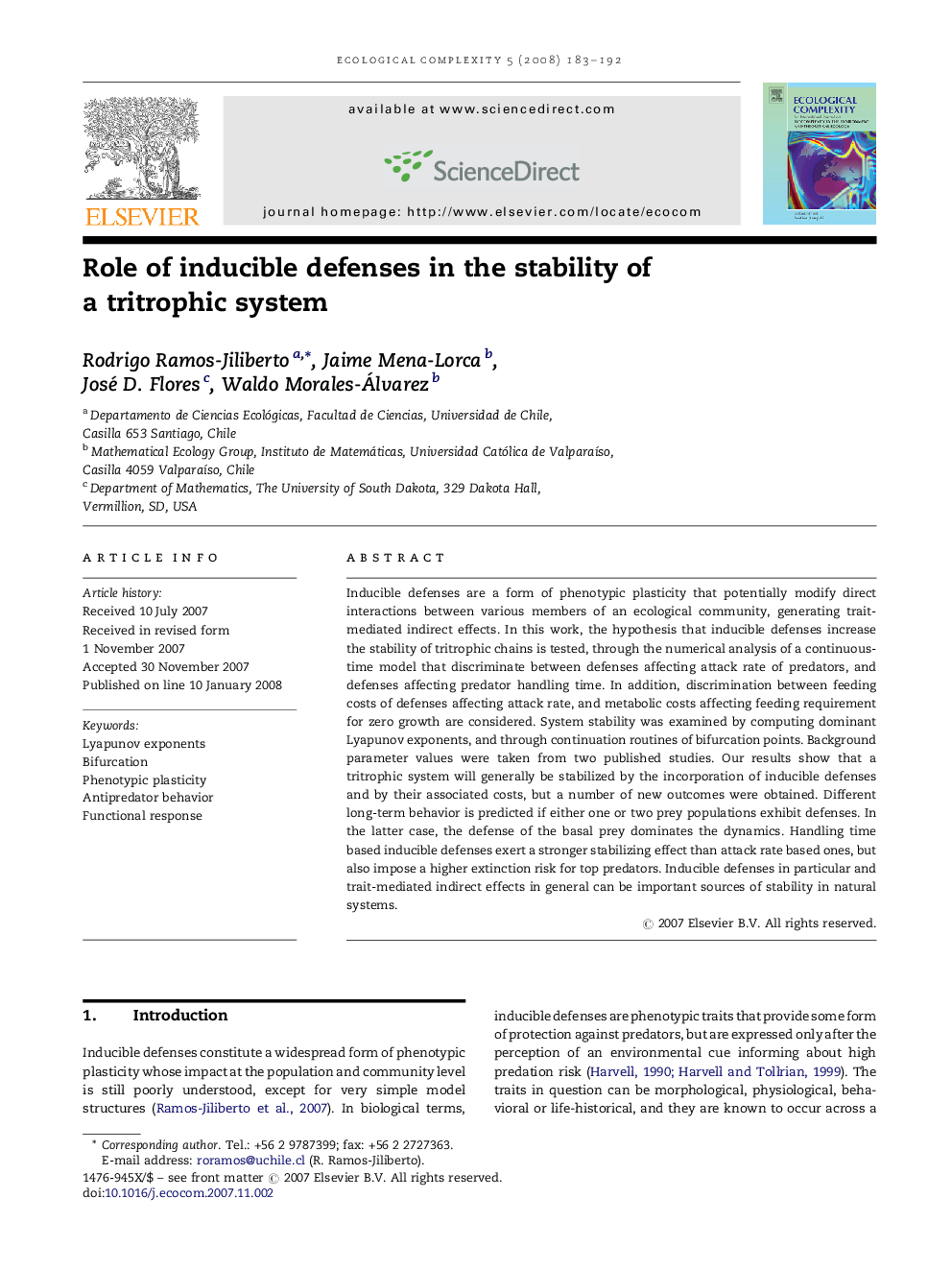| Article ID | Journal | Published Year | Pages | File Type |
|---|---|---|---|---|
| 4372715 | Ecological Complexity | 2008 | 10 Pages |
Abstract
Inducible defenses are a form of phenotypic plasticity that potentially modify direct interactions between various members of an ecological community, generating trait-mediated indirect effects. In this work, the hypothesis that inducible defenses increase the stability of tritrophic chains is tested, through the numerical analysis of a continuous-time model that discriminate between defenses affecting attack rate of predators, and defenses affecting predator handling time. In addition, discrimination between feeding costs of defenses affecting attack rate, and metabolic costs affecting feeding requirement for zero growth are considered. System stability was examined by computing dominant Lyapunov exponents, and through continuation routines of bifurcation points. Background parameter values were taken from two published studies. Our results show that a tritrophic system will generally be stabilized by the incorporation of inducible defenses and by their associated costs, but a number of new outcomes were obtained. Different long-term behavior is predicted if either one or two prey populations exhibit defenses. In the latter case, the defense of the basal prey dominates the dynamics. Handling time based inducible defenses exert a stronger stabilizing effect than attack rate based ones, but also impose a higher extinction risk for top predators. Inducible defenses in particular and trait-mediated indirect effects in general can be important sources of stability in natural systems.
Related Topics
Life Sciences
Agricultural and Biological Sciences
Ecology, Evolution, Behavior and Systematics
Authors
Rodrigo Ramos-Jiliberto, Jaime Mena-Lorca, José D. Flores, Waldo Morales-Álvarez,
